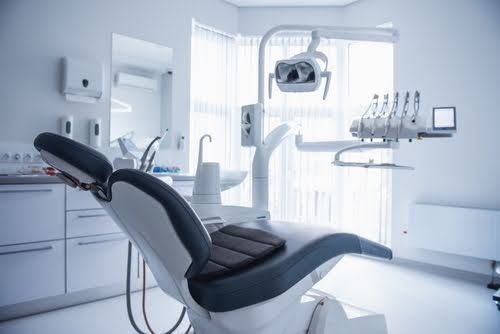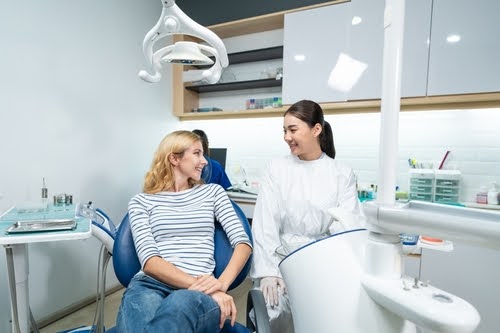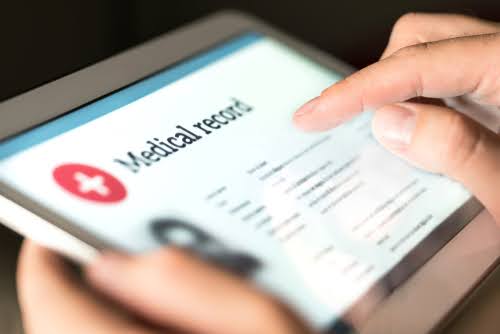
There are countless reasons for a dental office move: greater convenience and access to more patients, improved long-term stability and newer or better facilities, to name a few. To execute your move efficiently, you’ll need to have a solid plan in place.
Just as a well-planned move can help your business, an ill-conceived one can wind up causing harm. So, take a few minutes to read through this blog and learn how to minimize disruptions during the dental office moving process. It will help you be prepared for the task ahead, maximize your positive outcomes and protect your peace of mind.
1. Collect Your Credentials & Announce Your Move
If you’re relocating your dental practice to a new state, you should have already met your licensing obligations to comply with that state’s dental board. Check your new state’s dental practice laws to learn which documents you must post in your office.
Of course, you won’t have to apply for a new license if you stay in the same state. But a medical practice relocation is still always a good time to go through your credentials and organize them into a cohesive file. You will also need to notify your state board of dentistry regarding your new address shortly after you move.
Other change-of-address notifications you will need to provide include:
- Your attorney and accountant
- US Drug Enforcement Administration
- US Postal Service
- Electronic claims processors
- Insurance companies
- Payroll processing company
- Professional dental associations
- Dental equipment suppliers
2. Don’t Forget to Notify Your Payers
Delayed payments and lost revenue can add up quickly if your payers don’t have your new address. Fortunately, if you provided an updated address to the US Postal Service as part of step one, you’ll have a built-in redundancy if your payers ever slip up and send something to your old address.
Pay close attention to where and when your payments are received in the weeks following your move to make sure everything’s getting sent correctly. Address any problems you observe as soon as they arise.
3. Keep Your Patients Informed

As soon as you’ve settled on a new location for your clinic, start notifying your patients. If you wait until you’ve already moved, it’s more likely you will lose their business. Even if you’re moving far enough away that your existing patients can’t keep seeing you, giving them advance notice is still an important part of providing good patient care. It allows time to find a new medical practice that can handle their dental care needs.
Here are a few ways you can communicate your move plans to your patients:
- Post notices of your move in the office.
- Send patients emails before and after the move. Include the address and, if necessary, your new phone number.
- Mail postcards announcing the move that also include your new address and phone number.
- Announce your move on social media. You can even run a locally targeted social media campaign sharing the information. Not only will this remind existing patients of your move, it could also encourage new patients to check out your new location.
You can also direct your staff to bring up the subject of your new location with patients in the months leading up to your move. The information can be easily added to the scripts for office-visit reminder calls, as well as worked into greetings and check-out conversations.
4. Sort and Secure Patient Data
A dentist’s relocation is an ideal opportunity to review the status of sensitive medical records and patient data. Before the move, check that all patient files are electronically backed up and encrypted on the cloud or an offsite location.
If you use hard copy patient records, consider checking your post-move schedule and separating the charts for all the patients you’ll be seeing in the first few weeks. Since it can take a little while to get back to business as usual after a move, storing and moving these charts in a separate box can help ensure they’re on hand when you need them.

5. Keep Employees Engaged, Informed and Motivated
You need to keep your staff happy to ensure your practice runs smoothly leading up to, during and after your dental practice relocation. Good communication, good planning and good old-fashioned rewards can all help ensure everyone stays motivated throughout this potentially stressful process.
If you want your staff to participate in the move, set a positive and grateful tone. During packing and moving shifts, offer plenty of breaks and consider providing lunch, snacks or bonuses to say thank you for putting in the hours and extra effort.
Also, make sure your employees understand the purpose and plan behind the move. People generally feel more inclined to take on a tough task if they understand the logic behind it. You should also provide clear, regular communication about the facts of your planned relocation process, including:
- Anticipated timeline
- New address
- New facility layout
- Talking points for keeping patients informed
- Anticipated service disruptions
- Expectations for staff during the move
6. Create a Plan for Your Valuable Equipment
Minimize set-up time in the new office by creating detailed floor plans that show exactly where each piece of lab and medical equipment will go.
Share your plans as early as possible with any contractors handling remodeling or installation in your new location. This gives them a chance to spot potential issues with your medical equipment relocation plan and provide expert advice.
For moving day, work with a reliable moving services company experienced in moving specialized equipment, like Bekins. Provide them with a copy of your floor plan on moving day and leave additional copies at the new location. Redundancy is your friend if you want to ensure your lab, offices and treatment rooms are all set up correctly the first time.
7. Find Professional and Specialized Movers
Specialized healthcare facility movers have experience with medical office and clinic moves. To assess if a potential mover is qualified to help with your dental practice relocation, you can ask them for more specifics about their background. Look for details like:
- Past experience working with medical office relocations.
- Past experience with sensitive equipment moves like X-rays, separation tanks and autoclaves.
- Resources specific to dental and medical office relocation, such as checklists and guides.
- Available references from previous dental or medical clients.
The Bekins team has decades of experience moving dental offices and clinics. We’d love to answer any questions you may have to give you peace of mind on moving day and beyond!

Trust Bekins Van Lines for Expert Dental Office Moving Services
Bekins Van Lines has more than a century of experience helping people and businesses move. Trust our industry-leading experts to safely transport your specialty equipment and sensitive medical records anywhere in the country. We also offer convenient interim storage if you need a secure holding space while your new office is being prepared. Reach out to our team today!


